Breif Electric Guitar History
The electric guitar is an invention that changed the world of music at the time. Before electrically amplified instruments it was hard to use guitars as a part of big concerts, because of the fact that orchestras got quite massive with size in popular music (Picture 1). Even thou the first electric guitar was made around 1945, it is still in great use of most popular musicians.
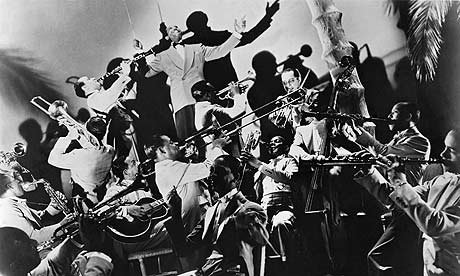
Picture 1 - 1920's Orchestra
An electric guitar is a fretted stringed instrument with a neck and body that uses a pickup to convert the vibration of its strings into electrical signals (Picture 2). The vibration occurs when a guitarist strums, plucks or fingerpicks the strings. It is sensed by a pickup, most commonly by a magnetic pickup that uses the principle of direct electromagnetic induction. The signal generated by an electric guitar is too weak to drive a loudspeaker, so it is plugged into a guitar amplifier before being sent to a loudspeaker, which makes a sound loud enough to hear.
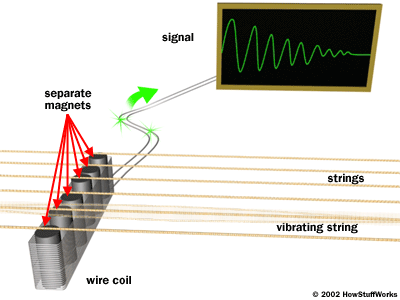
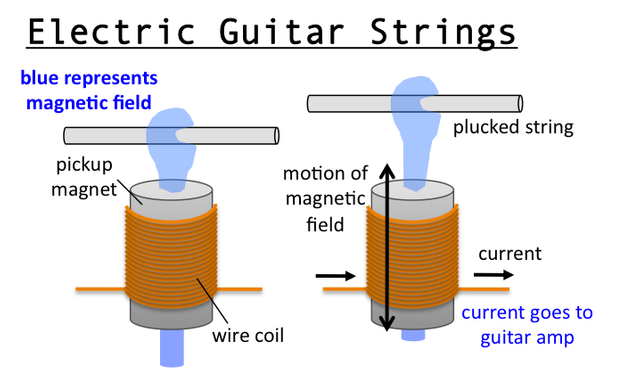
Picture 2 - Conversion of vibrations to electric impulse
The revolution of electrically amplified instruments began around the start of 20th century. Engineers began experimenting with electrically powered instruments, such as music boxes and player pianos, in the 1800s, but not with much success.
I have managed to find a video of the first sound recording ever made.
Patents from the 1910s show telephone transmitters were adapted and placed inside violins and banjos to amplify the sound. Hobbyists in the 1920s used carbon button microphones attached to the bridge; however, these detected vibration from the bridge on top of the instrument, resulting in a weak signal. First guitars that have adopted that technology was mostly built by acoustic guitar makers. Some of the first adaptations were made on hollow-bodied acoustic instruments, by inserting the tungsten pickups. Tungsten, also known as wolfram, is a chemical element who got its name from the former Swedish name for the tungstate mineral scheelite, from tung sten "heavy stone".
The first electrically amplified guitar was designed in 1931 by George Beauchamp, the general manager of the National Guitar Corporation, with Paul Barth, who was vice president. The maple body prototype for the one-piece cast aluminum "frying pan"(Picture 3) was built by Harry Watson, factory superintendent of the National Guitar Corporation. It was made as a still lap guitar, with an electric pickup and small tin/wood body. It sat revolution in country and early blues because of its versatility, lightness, and possibility to be amplified.

Picture 3 - A-22 Frying Pen
By early-mid 1935, Electro String Instrument Corporation made a great success with the A-22 Frying Pan and decided to capture a new audience through its release of the "Electro-Spanish Model B" and the "Electro-Spanish Ken Roberts" (Picture 4) which was the first full 25" scale electric guitar produced. Soon after that, many companies like Gibson and Voxx International (AudioVox at the time) started to experiment with electricity.
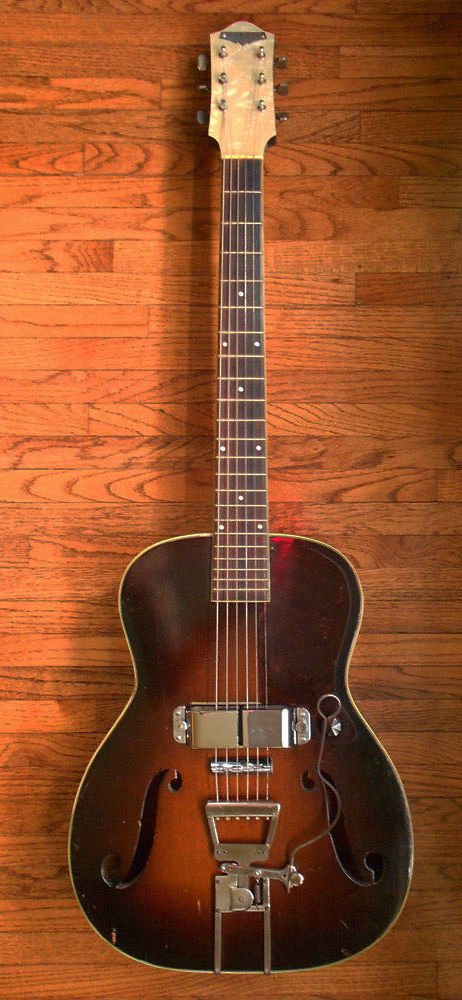
Picture 4 - Electro-Spanish Ken Roberts
Gibson's first production electric guitar, marketed in 1936, was the ES-150 model ("ES" for "Electric Spanish", and "150" reflecting the $150 price of the instrument, along with matching amplifier) (Picture 5). The ES-150 guitar featured a single-coil, hexagonally shaped "bar" pickup, which was designed by Walt Fuller. It became known as the "Charlie Christian" pickup. The ES-150 achieved some popularity but suffered from unequal loudness across the six strings.
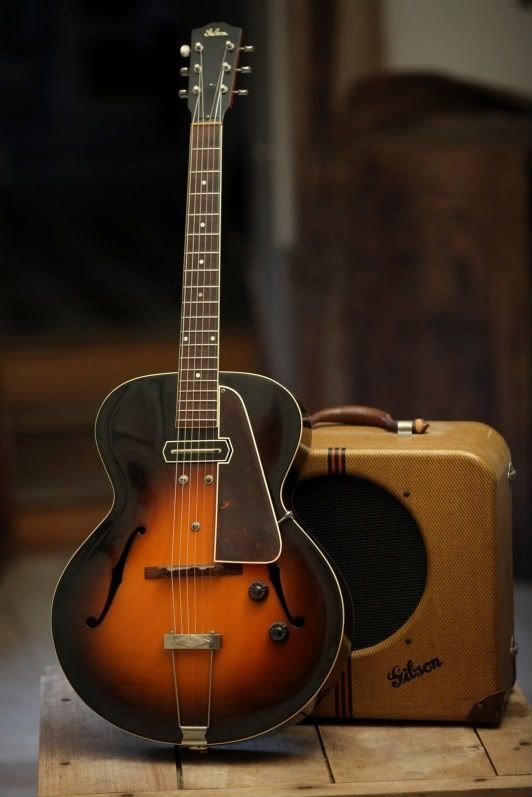
Picture 5 - ES - 150 with amplifier
In 1946 Leo Fender designed a solid body electric guitar with one pickup. Around the same time musician and inventor, Les Paul was working on ideas for a solid body electric guitar which would later be referred to as a "log guitar" because it was made of a 4x4 block of wood attached to a neck. In 1950 Fender® introduced a solid body, prototype guitar called the Esquire® (Picture 6). The Esquire had a single pickup and was reintroduced in 1951 with two pickups, and renamed to Broadcaster®. The Broadcaster® was again renamed to its present name, Telecaster®. The Telecaster& became the first mass-produced solid-body, electric Spanish style guitars available on a commercial market. The Precision Bass® was introduced by Fender® within the same year.

Picture 6 - Esquire®
Gibson Guitar Corporation® endorsed Les Paul to play and bare his signature on their first solid body guitars in 1952. These guitars look nothing like Les Paul's "log guitar". Gibson Les Paul® (Picture 7) model guitars became popular with guitarists who preferred humbucker pickups.
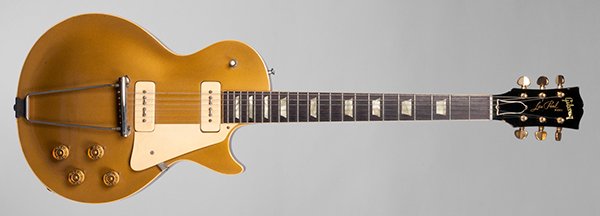
Picture 7 - Gibson Les Paul®
Fender produced the Stratocaster® (Picture 8) in 1954, which is one of the most iconic and all-around guitars and made a great commercial success with it.

Picture 8 - Stratocaster®
Congratulations @redrobin! You have completed some achievement on Steemit and have been rewarded with new badge(s) :
Click on any badge to view your own Board of Honor on SteemitBoard.
For more information about SteemitBoard, click here
If you no longer want to receive notifications, reply to this comment with the word
STOPCongratulations @redrobin! You have completed some achievement on Steemit and have been rewarded with new badge(s) :
Click on any badge to view your own Board of Honor on SteemitBoard.
For more information about SteemitBoard, click here
If you no longer want to receive notifications, reply to this comment with the word
STOPCongratulations @redrobin! You have received a personal award!
Click on the badge to view your Board of Honor.
Congratulations @redrobin! You received a personal award!
You can view your badges on your Steem Board and compare to others on the Steem Ranking
Vote for @Steemitboard as a witness to get one more award and increased upvotes!